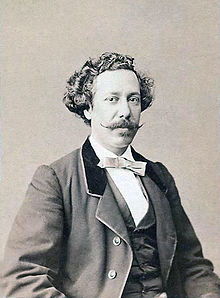
Back فيكتور ميريليس Arabic Victor Meirelles de Lima Catalan Victor Meirelles German Victor Meirelles Esperanto Victor Meirelles Spanish Victor Meirelles de Lima French ויקטור מאיירליס HE Victor Meirelles ID Victor Meirelles IO Victor Meirelles Italian
Victor Meirelles | |
|---|---|
 Meirelles, 1860s | |
| Born | 18 August 1832 |
| Died | 22 February 1903 (aged 70) Rio de Janeiro, Federal District, Brazil |
| Alma mater | Imperial Academy of Fine Arts |
| Known for | Painting |
| Notable work | Primeira Missa no Brasil Moema Batalha dos Guararapes Combate Naval do Riachuelo |
| Movement | Romanticism Academicism |
Victor Meirelles de Lima (18 August 1832 – 22 February 1903) was a Brazilian painter and teacher who is best known for his works relating to his nation's culture and history. From humble origins, his talent was soon recognized, being admitted as a student at the Imperial Academy of Fine Arts. He specialized in the genre of history painting, and upon winning the Academy's Foreign Travel Award, he spent several years training in Europe. There he painted his best-known work, Primeira Missa no Brasil. Returning to Brazil, he became one of emperor Pedro II's favorite painters, joining the monarch's patronage program and aligning himself with his proposal to renew the image of Brazil through the creation of visual symbols of its history.
He became an esteemed teacher at the Academy, forming a generation of painters, and continued his personal work by performing other important historical paintings, such as Batalha dos Guararapes, Moema and Combate Naval do Riachuelo, as well as portraits and landscapes, of which the Retrato de Dom Pedro II and his three Panoramas stand out. In his heyday he was considered one of the leading artists of the second reign, often receiving high praise for the perfection of his technique, the nobility of his inspiration and the general quality of his monumental compositions, as well as his unblemished character and tireless dedication to his craft. Meirelles got many admirers both in Brazil and abroad. He received imperial decorations and was the first Brazilian painter to win admission to the Paris Salon, but was also the target of scathing criticism, arousing strong controversies in a period when disputes between academic painters and the early modernists were ignited. With the advent of the Republic in Brazil, for being too linked to the Imperial government, he fell into ostracism, and ended his life in precarious financial conditions, already much forgotten.
Meirelles' works belong to the Brazilian academic tradition, formed by an eclectic synthesis of neoclassical, romantic and realist references, but the painter also absorbed Baroque and Nazarene influences. After a period of relative obscurity, recent criticism has reinstated him as one of the forerunners of modern Brazilian painting and one of the main Brazilian painters of the 19th century, for many the greatest of all, being the author of some of the most celebrated visual recreations of Brazilian history, that remain alive in the country's culture and are endlessly reproduced in school textbooks and a variety of other media.